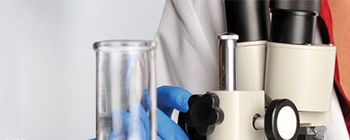Cannabis Microbial Testing
One moment while we fetch your results ![]()
Cannabis microbial testing is performed to make sure that cannabis plant materials and products are safe for human consumption. This is especially important for medicinal marijuana use because patients may already be ill or immunocompromised. But even recreational users could be harmed by the presence of human pathogens.
Gamma irradiation of plants and products will destroy most bacteria but may not affect viruses or mycotoxins.
Conventional microbiological testing methods can be borrowed from the food and tobacco industries, where techniques are established and widely applied.
- TAMC and TYMC: Total aerobic microbial count (TAMC) and total yeast/mold count (TYMC) estimates the number of viable aerobic bacteria, yeast/mold organisms, or spores in a sample
- Microbiology media, including selective growth media: Broth and agar products formulated to help identify specific species of microorganisms
These methods are not especially sensitive or specific, but they are familiar. Some total count tests offer preliminary results but do not help determine whether a product is safe.
Some molecular-based detection methods are becoming available and are gaining acceptance. Quantitative real-time PCR (qPCR) protocols can identify and quantify microbes in cannabis without the need to culture.
Microbial testing may also help to determine the plant’s microbiome and understand its effects on growth, pathogen resistance, or metabolic activity. This knowledge could lead to greater crop yields.
Cannabis microbial testing procedures may also detect:
- Salmonella ssp.
- Total Coliforms
- Escherichia coli and Shiga toxin-producing E. coli
- Staphylococcus aureus
- Various species of yeast and mold
- Aspergillus ssp. (A. flavus, A. fumigatus, A. niger, A. terreus)


